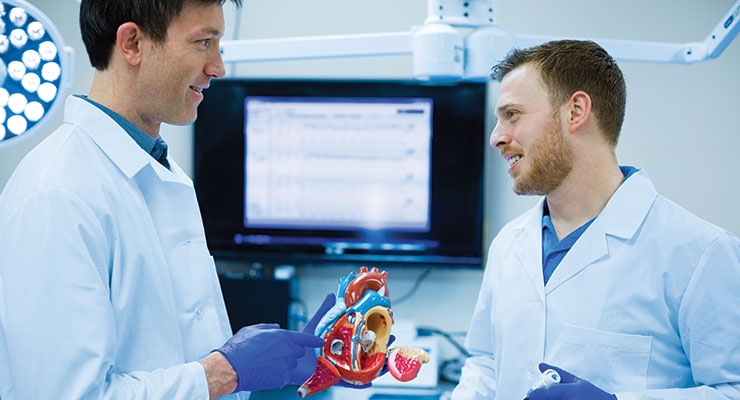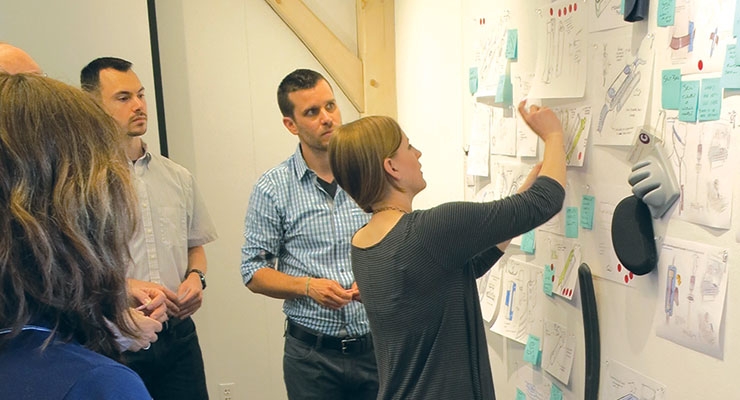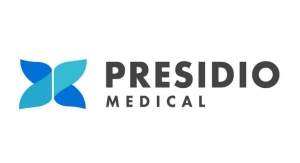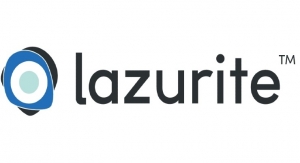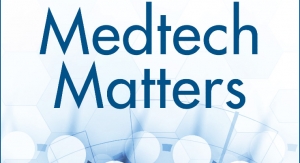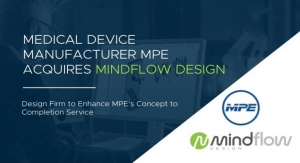Sam Brusco, Associate Editor01.30.17
Some called it “the crunch enjoyed around the world.”
In order to more adequately grasp consumer preferences, back in 2011 PepsiCo, owner of the Frito-Lay potato chip brand, conducted market research on what core customers—in this case, young men—wanted from their potato chips. Not surprisingly, the researchers discovered taste wasn’t the only important attribute; texture, aroma, and convenience also factored into the enjoyment of the snack. After a number of consumer surveys and undoubtedly delicious research with focus groups, it became clear that snackers desired a heartier chip. Believe it or not, that simple request turned out to be quite the engineering challenge. How could a hearty chip be designed while still retaining a thin composition?
Frito-Lay’s answer: give snackers a more “three-dimensional” eating experience by manufacturing chips with a more pronounced corrugated pattern—potentially, with ridges twice as deep as then-typical Ruffles chips. It made perfect sense; deeper ridges would surely produce a more resounding crunch and double each chip’s dip capacity. Snackers everywhere would rejoice in crunchy delight! Unfortunately, that structural change was easier said than done. PepsiCo did not have the equipment to manufacture chips with deeper ridges and varying angles.
After sweeping crumbs off the market research room floor, PepsiCo’s research and development team went to work on designing both cutting blades that could slice chips evenly without cracking them and the mechanism feeding them in correct alignment with the blade. In the process, concepts like “bending stress” and “blade tip geometry” were thrown around. (Keep in mind, this is the effort that goes into a seemingly innocuous snack.)
“They approached the problem differently and drove deep fundamental understanding of the mechanical dynamics of potato slicing,” explained Kevin O’Sullivan, vice president of PepsiCo Advanced Research, in an “Innovation Story” on the firm’s website.
The first “concept chips” were made with a slicer intended for French fries, but unfortunately cracked, compressed, and didn’t hold up when cooked. “They were irregular, had sharp peaks, and could not be used for consumer testing,” said Keith Barber, director at PepsiCo’s Frito-Lay North America Research and Development, in the same story.
Rather than using the slicer for consumer design testing, the team computer modeled the chip and 3D printed over two-dozen potato chip prototypes, which varied in waviness and thickness. After narrowing this down to nine prototypes using a specially designed vegetable slicer, the chips were consumer tested and resulted in some of the highest consumer response scores the company had seen in decades. Using the vegetable slicer as a reference model, the R&D engineers designed a blade to fit Frito-Lay’s existing manufacturing equipment, testing and tweaking it along the way alongside optimal chip designs. The team took the newly designed blade to Frito-Lay’s manufacturing facility for full-scale testing and to hammer out any remaining technical challenges. The Ruffles Ultimate chips were finally rolled out in 2012 (and were incredibly well-received), revolutionizing potato chip design forever.
The lesson to be learned here? An effective research and development strategy really is all that and a bag of chips.
The Current State of Medical Device R&D
The same ideas hold true for medical product development, but with an entirely different type of crunch. Because R&D activities don’t offer an immediate return on investment, there can often be a money crunch—that is, the uncertainty about how much funding to pour into R&D, and where precisely to pour it. Many stress the importance of the earliest design stages, so should more funding be allocated there? But a product can’t hit the market without validation and testing, so should those phases receive more funding?
What’s more, thanks to the consumer demand for quicker turnaround on new devices, there is a time crunch for R&D activities as well. Move too slowly, and the product risks obsolescence. Move too quickly, and the product may not garner U.S. Food and Drug Administration approval—or worse, contain a design flaw that risks a recall or endangers patients.
For that reason, OEMs turn to firms that provide R&D services when time or money spent on developing a product becomes an issue internally. These companies provide the expertise necessary when bandwidth or monetary resources don’t exist for the OEM, and can be quite valuable due to their specialized knowledge and dedicated teams.
Further, according to recent Advanced Medical Technology Association and Medical Device Manufacturers Association surveys, R&D investments are at a high point, due in a large part to the suspension of the medical device tax. So far, it seems funds not lost on the tax are being allocated where they should: to innovation. The surveys found:
“Medical device R&D is growing faster than ever,” noted Jared Pack, a product development engineer for Morrisville, N.C.-based contract design and manufacturing firm EG-GILERO.
The increased emphasis on the early-stage processes is having a favorable impact on patient outcomes and cost of treatment as well.
“There is an ever-growing demand for higher quality and more cost-effective devices, and being able to provide these devices is a win-win for everyone involved,” Pack continued. “Better patient outcomes means lower malpractice risk, and that reduced cost can be carried through to the treatment cost for the patient.”
“A significant source of R&D growth has been the result of mergers, acquisitions, and strategic partnerships,” illuminated José Wong, senior director of engineering and program management for Hollis, N.H.-based Farm, a full-service product development company. “Many companies see that organic growth or in-house efforts may be slower because of cost, company culture, and competing commitments. The model is moving increasingly toward acquiring or partnering with other specialized groups. Product development firms are in a great position to support organizations that need the creativity and expertise to innovate and grow. Collaboration also reduces risk, is cost-effective, and helps get the product to market more quickly.”
“Despite being under significant pressure from the business environment (i.e., reduced levels of venture capital funding and a high degree of merger activity reducing the number of large OEMs), I am always impressed with the state of R&D in the medical device industry,” mused Kenneth Fine, president of Mansfield, Mass.-based full-service contract design and manufacturing firm Proven Process Medical Devices. “I enjoy learning of new devices and products that are treating conditions that were historically problematic. In the past, ‘me too’ devices that did not add significant value to healthcare were prevalent. The R&D efforts that I see today are directed towards products that add true value to patient care.”
Though for the most part the state of R&D looks hopeful, the heavily regulated medical device industry puts unique pressures on firms specializing in these services. During development, devices are subject to certain validation requirements that only exist in the medical industry. Further, one phase of R&D consumes an immense amount of time and money, and exists nowhere but in the medical industry: clinical trials.
“R&D is becoming more and more important, getting more complex, and the pressures on cost and time are tremendous,” said Lars Gerding, director of technology for Freudenberg Medical, a Carpinteria, Calif.-based full-service contract manufacturing firm. “Launching new products and getting ahead of the competition is extremely important for our customers. All the mergers within our industry greatly affect projects and R&D.”
“R&D in the medical device industry continues to be challenged by increasing costs associated with the ever-changing and increased complexity of after tool build activities like validation requirements and clinical trials,” explained Benjamin Harp, chief operating officer of Orchard Park, N.Y.-based Polymer Conversions Inc., a full-service contract manufacturer specializing in thermoplastics. “Validation requirements continue to become more comprehensive as industry and the OEM try to control more and more of the production outputs. Controlling more dimensions requires more engineering touches, resulting in more dollars and time needed to properly validate the device. Clinical trials continue to get more regulated. Regulatory scrutiny results in R&D complexity, which increases costs and time needed to develop new technologies.”
How OEMs Spend R&D Money
Medical device OEMs today are under more pressure than ever to produce, and produce quickly. Another OEM with a comparable device and a speedier turnaround time for their product is just around the corner. But not every OEM can be a Medtronic or Boston Scientific with a team dedicated specifically to R&D, or millions of dollars to spend solely on development.
It’s mainly due to this demand for faster and more efficient R&D (resulting in a speedier overall product development cycle) without the internal capabilities that firms providing these services are becoming so attractive. Rather than potentially wasting time and resources forging the necessary team and equipment to meet the demand, OEMs are noticing that their R&D money may be more aptly spent on a firm that is accustomed to a high-intensity R&D environment.
“There are definitely cost pressures, but we still see a rise in medical device R&D spending,” commented Wong. “Companies realize that the competition is not standing still and it’s important to keep new products in the pipeline. That being said, budgets are tight, and valuable R&D teams are often redirected to support installed base engineering activities and/or are working on incremental product improvements or line-extensions. Because of this, we find that OEMs are outsourcing development activities to supplement their teams.”
“We are always working on medical device technologies with our OEM clients,” Harp explained. But even those specializing in R&D services run into challenges along the way.
“The costly challenges we see in R&D are when shortcuts are taken in development steps because of budget and time restraints,” he continued. “Sometimes, these shortcuts result in program delays and budget overruns. A common example we see is when prototypes are designed and built based on cost and time, sacrificing proper design for manufacturability and optimized device performance. This sometimes results in an extra round of design changes, prototype tooling, and trials, in support of the changes required. We encourage involvement of a manufacturing partner early on in R&D and product development activities to improve outputs.”
“Research and development” is such a common phrase in any science—but for most, the definition stops there. There are in fact many, many different sections of R&D: design, testing, clinical trial, validation, quality assurance, and so on. Simply noting there is more medical device R&D spending overall is akin to saying the U.S. government is spending more on cancer research. That’s all well and good, but there are many different types of cancer and each of them requires different research tactics.
Firms specializing in medical product research and development have the unique position of knowing exactly where OEMs spend most of their money during the process. They are also quicker to address areas they notice are underfunded.
“I find that most of the R&D dollars are typically spent in verification and validation of the product, especially if human clinical studies are required to validate the device or if there was skimping in earlier parts of the R&D process,” illustrated Fine. “Unfortunately, I find design input activities are often the least funded part of the R&D process, even though this early phase establishes the basis and foundation for the device development.”
Pack also agreed that OEMs should be paying more attention and dollars toward design activities, despite it being the earliest section of the development process. In fact, it’s because conceptual design is one of the initial steps in product development that it should be given more weight.
“The most important part of the process is prior to any verifications or validations,” he asserted. “Ideally, before a project hits design freeze, the design should be so well understood that the engineers can predict the test outcomes with ease. This allows treatment of design verification/validation (DV) and process validation to be a ‘check box’ rather than a true test. If the early stages are underfunded, there is a risk of failing at DV, which causes time loss due to the quality processes that must occur at that time.”
Interestingly enough, one challenge with R&D spending defies intuition. The device itself seems to be the focus of research and development funding, which seems like the obvious place to allocate resources. And why challenge that assumption? The device is the OEM’s end goal, and the return on all development resources expended. However, that appears to result in a dearth of funds in research and development resources that are equally as integral.
“The most R&D money is spent on devices, not on improving production technologies or making products more affordable,” criticized Gerding. “These areas are underfunded. With a strong focus on new products and new devices, spending for components is more limited. We also see a lack of focus and spending on working with new materials—customers tend to want to use a particular material that they have worked with in the past.”
A Balancing Act
There doesn’t appear to be one answer to executing an effective medical device R&D strategy. Should more time be spent on design, or testing? How can money be allocated to production equipment when it’s already being spent on the product? One idea most firms providing these services can agree on is that research and development strategy requires a delicate balance between too much and too little, with regard to both time and money. As in many facets of life, moderation is key.
“Spend too much time in R&D, and you run the risk of missing a market opportunity and being beat to the punch by a competitor,” advised Wong. “However, if you spend too little time, you risk running into product issues that may delay your launch, or deliver a less than optimal product with performance or quality issues. A company’s reputation is valuable, and risking a product launched with defects—even if they’re just minor annoyances—can be detrimental to a company’s brand and market position.”
“The time needed to spend on any particular medical device R&D program should be a function of the product’s cost/benefit (which helps establish its profit margin along with the corresponding reimbursement), the opportunity window (before a competing technology obsoletes the device), its lifetime in the market, and its technological complexity,” explained Fine. “Spending too little time in R&D may yield a product that does not meet the needs of the stakeholders, has poor performance, is too costly to manufacture and service, or is unreliable. Spending too much time in R&D may cause the product to miss its window of market opportunity, have too short a market life to recoup sufficient costs, or become technologically obsolete too soon.”
“If you spend too little time you get behind the competition; if you are not best in class, you are done,” warned Gerding. “Spending too much on R&D is not the issue; the issue is spending money on the wrong idea or the wrong device that doesn’t really take off. It’s essential to choose the right product, the right project. The challenge is how to access and evaluate all the ideas out there.”
The advice is simple to understand, yet complicated to carry out: pay attention to the market and weigh the allocation of R&D resources against the device’s potential benefits—both financial and for patients.
“Medical device R&D spending is a balancing act,” said Pack. “Spend too little, and the risks become creating a less effective and less reliable product. Most importantly, the risk of patient injury due to a design flaw increases if not enough time and money was spent to understand the device. Spending too little also risks not gaining regulatory approval for sale—especially with novel technology, which could invalidate the effort that was spent. However, spending too much could eliminate the return on the investment that was made, which isn’t good either. Making money is what allows further development and innovation.”
In order to more adequately grasp consumer preferences, back in 2011 PepsiCo, owner of the Frito-Lay potato chip brand, conducted market research on what core customers—in this case, young men—wanted from their potato chips. Not surprisingly, the researchers discovered taste wasn’t the only important attribute; texture, aroma, and convenience also factored into the enjoyment of the snack. After a number of consumer surveys and undoubtedly delicious research with focus groups, it became clear that snackers desired a heartier chip. Believe it or not, that simple request turned out to be quite the engineering challenge. How could a hearty chip be designed while still retaining a thin composition?
Frito-Lay’s answer: give snackers a more “three-dimensional” eating experience by manufacturing chips with a more pronounced corrugated pattern—potentially, with ridges twice as deep as then-typical Ruffles chips. It made perfect sense; deeper ridges would surely produce a more resounding crunch and double each chip’s dip capacity. Snackers everywhere would rejoice in crunchy delight! Unfortunately, that structural change was easier said than done. PepsiCo did not have the equipment to manufacture chips with deeper ridges and varying angles.
After sweeping crumbs off the market research room floor, PepsiCo’s research and development team went to work on designing both cutting blades that could slice chips evenly without cracking them and the mechanism feeding them in correct alignment with the blade. In the process, concepts like “bending stress” and “blade tip geometry” were thrown around. (Keep in mind, this is the effort that goes into a seemingly innocuous snack.)
“They approached the problem differently and drove deep fundamental understanding of the mechanical dynamics of potato slicing,” explained Kevin O’Sullivan, vice president of PepsiCo Advanced Research, in an “Innovation Story” on the firm’s website.
The first “concept chips” were made with a slicer intended for French fries, but unfortunately cracked, compressed, and didn’t hold up when cooked. “They were irregular, had sharp peaks, and could not be used for consumer testing,” said Keith Barber, director at PepsiCo’s Frito-Lay North America Research and Development, in the same story.
Rather than using the slicer for consumer design testing, the team computer modeled the chip and 3D printed over two-dozen potato chip prototypes, which varied in waviness and thickness. After narrowing this down to nine prototypes using a specially designed vegetable slicer, the chips were consumer tested and resulted in some of the highest consumer response scores the company had seen in decades. Using the vegetable slicer as a reference model, the R&D engineers designed a blade to fit Frito-Lay’s existing manufacturing equipment, testing and tweaking it along the way alongside optimal chip designs. The team took the newly designed blade to Frito-Lay’s manufacturing facility for full-scale testing and to hammer out any remaining technical challenges. The Ruffles Ultimate chips were finally rolled out in 2012 (and were incredibly well-received), revolutionizing potato chip design forever.
The lesson to be learned here? An effective research and development strategy really is all that and a bag of chips.
The Current State of Medical Device R&D
The same ideas hold true for medical product development, but with an entirely different type of crunch. Because R&D activities don’t offer an immediate return on investment, there can often be a money crunch—that is, the uncertainty about how much funding to pour into R&D, and where precisely to pour it. Many stress the importance of the earliest design stages, so should more funding be allocated there? But a product can’t hit the market without validation and testing, so should those phases receive more funding?
What’s more, thanks to the consumer demand for quicker turnaround on new devices, there is a time crunch for R&D activities as well. Move too slowly, and the product risks obsolescence. Move too quickly, and the product may not garner U.S. Food and Drug Administration approval—or worse, contain a design flaw that risks a recall or endangers patients.
For that reason, OEMs turn to firms that provide R&D services when time or money spent on developing a product becomes an issue internally. These companies provide the expertise necessary when bandwidth or monetary resources don’t exist for the OEM, and can be quite valuable due to their specialized knowledge and dedicated teams.
Further, according to recent Advanced Medical Technology Association and Medical Device Manufacturers Association surveys, R&D investments are at a high point, due in a large part to the suspension of the medical device tax. So far, it seems funds not lost on the tax are being allocated where they should: to innovation. The surveys found:
- 83 percent of the respondents reported increased R&D funding, or avoided reducing R&D funding.
- 33 percent invested in a new research facility, lab, or research infrastructure.
- When asked how much they had increased their R&D budget, the average increase was 19 percent.
“Medical device R&D is growing faster than ever,” noted Jared Pack, a product development engineer for Morrisville, N.C.-based contract design and manufacturing firm EG-GILERO.
The increased emphasis on the early-stage processes is having a favorable impact on patient outcomes and cost of treatment as well.
“There is an ever-growing demand for higher quality and more cost-effective devices, and being able to provide these devices is a win-win for everyone involved,” Pack continued. “Better patient outcomes means lower malpractice risk, and that reduced cost can be carried through to the treatment cost for the patient.”
“A significant source of R&D growth has been the result of mergers, acquisitions, and strategic partnerships,” illuminated José Wong, senior director of engineering and program management for Hollis, N.H.-based Farm, a full-service product development company. “Many companies see that organic growth or in-house efforts may be slower because of cost, company culture, and competing commitments. The model is moving increasingly toward acquiring or partnering with other specialized groups. Product development firms are in a great position to support organizations that need the creativity and expertise to innovate and grow. Collaboration also reduces risk, is cost-effective, and helps get the product to market more quickly.”
“Despite being under significant pressure from the business environment (i.e., reduced levels of venture capital funding and a high degree of merger activity reducing the number of large OEMs), I am always impressed with the state of R&D in the medical device industry,” mused Kenneth Fine, president of Mansfield, Mass.-based full-service contract design and manufacturing firm Proven Process Medical Devices. “I enjoy learning of new devices and products that are treating conditions that were historically problematic. In the past, ‘me too’ devices that did not add significant value to healthcare were prevalent. The R&D efforts that I see today are directed towards products that add true value to patient care.”
Though for the most part the state of R&D looks hopeful, the heavily regulated medical device industry puts unique pressures on firms specializing in these services. During development, devices are subject to certain validation requirements that only exist in the medical industry. Further, one phase of R&D consumes an immense amount of time and money, and exists nowhere but in the medical industry: clinical trials.
“R&D is becoming more and more important, getting more complex, and the pressures on cost and time are tremendous,” said Lars Gerding, director of technology for Freudenberg Medical, a Carpinteria, Calif.-based full-service contract manufacturing firm. “Launching new products and getting ahead of the competition is extremely important for our customers. All the mergers within our industry greatly affect projects and R&D.”
“R&D in the medical device industry continues to be challenged by increasing costs associated with the ever-changing and increased complexity of after tool build activities like validation requirements and clinical trials,” explained Benjamin Harp, chief operating officer of Orchard Park, N.Y.-based Polymer Conversions Inc., a full-service contract manufacturer specializing in thermoplastics. “Validation requirements continue to become more comprehensive as industry and the OEM try to control more and more of the production outputs. Controlling more dimensions requires more engineering touches, resulting in more dollars and time needed to properly validate the device. Clinical trials continue to get more regulated. Regulatory scrutiny results in R&D complexity, which increases costs and time needed to develop new technologies.”
How OEMs Spend R&D Money
Medical device OEMs today are under more pressure than ever to produce, and produce quickly. Another OEM with a comparable device and a speedier turnaround time for their product is just around the corner. But not every OEM can be a Medtronic or Boston Scientific with a team dedicated specifically to R&D, or millions of dollars to spend solely on development.
It’s mainly due to this demand for faster and more efficient R&D (resulting in a speedier overall product development cycle) without the internal capabilities that firms providing these services are becoming so attractive. Rather than potentially wasting time and resources forging the necessary team and equipment to meet the demand, OEMs are noticing that their R&D money may be more aptly spent on a firm that is accustomed to a high-intensity R&D environment.
“There are definitely cost pressures, but we still see a rise in medical device R&D spending,” commented Wong. “Companies realize that the competition is not standing still and it’s important to keep new products in the pipeline. That being said, budgets are tight, and valuable R&D teams are often redirected to support installed base engineering activities and/or are working on incremental product improvements or line-extensions. Because of this, we find that OEMs are outsourcing development activities to supplement their teams.”
“We are always working on medical device technologies with our OEM clients,” Harp explained. But even those specializing in R&D services run into challenges along the way.
“The costly challenges we see in R&D are when shortcuts are taken in development steps because of budget and time restraints,” he continued. “Sometimes, these shortcuts result in program delays and budget overruns. A common example we see is when prototypes are designed and built based on cost and time, sacrificing proper design for manufacturability and optimized device performance. This sometimes results in an extra round of design changes, prototype tooling, and trials, in support of the changes required. We encourage involvement of a manufacturing partner early on in R&D and product development activities to improve outputs.”
“Research and development” is such a common phrase in any science—but for most, the definition stops there. There are in fact many, many different sections of R&D: design, testing, clinical trial, validation, quality assurance, and so on. Simply noting there is more medical device R&D spending overall is akin to saying the U.S. government is spending more on cancer research. That’s all well and good, but there are many different types of cancer and each of them requires different research tactics.
Firms specializing in medical product research and development have the unique position of knowing exactly where OEMs spend most of their money during the process. They are also quicker to address areas they notice are underfunded.
“I find that most of the R&D dollars are typically spent in verification and validation of the product, especially if human clinical studies are required to validate the device or if there was skimping in earlier parts of the R&D process,” illustrated Fine. “Unfortunately, I find design input activities are often the least funded part of the R&D process, even though this early phase establishes the basis and foundation for the device development.”
Pack also agreed that OEMs should be paying more attention and dollars toward design activities, despite it being the earliest section of the development process. In fact, it’s because conceptual design is one of the initial steps in product development that it should be given more weight.
“The most important part of the process is prior to any verifications or validations,” he asserted. “Ideally, before a project hits design freeze, the design should be so well understood that the engineers can predict the test outcomes with ease. This allows treatment of design verification/validation (DV) and process validation to be a ‘check box’ rather than a true test. If the early stages are underfunded, there is a risk of failing at DV, which causes time loss due to the quality processes that must occur at that time.”
Interestingly enough, one challenge with R&D spending defies intuition. The device itself seems to be the focus of research and development funding, which seems like the obvious place to allocate resources. And why challenge that assumption? The device is the OEM’s end goal, and the return on all development resources expended. However, that appears to result in a dearth of funds in research and development resources that are equally as integral.
“The most R&D money is spent on devices, not on improving production technologies or making products more affordable,” criticized Gerding. “These areas are underfunded. With a strong focus on new products and new devices, spending for components is more limited. We also see a lack of focus and spending on working with new materials—customers tend to want to use a particular material that they have worked with in the past.”
A Balancing Act
There doesn’t appear to be one answer to executing an effective medical device R&D strategy. Should more time be spent on design, or testing? How can money be allocated to production equipment when it’s already being spent on the product? One idea most firms providing these services can agree on is that research and development strategy requires a delicate balance between too much and too little, with regard to both time and money. As in many facets of life, moderation is key.
“Spend too much time in R&D, and you run the risk of missing a market opportunity and being beat to the punch by a competitor,” advised Wong. “However, if you spend too little time, you risk running into product issues that may delay your launch, or deliver a less than optimal product with performance or quality issues. A company’s reputation is valuable, and risking a product launched with defects—even if they’re just minor annoyances—can be detrimental to a company’s brand and market position.”
“The time needed to spend on any particular medical device R&D program should be a function of the product’s cost/benefit (which helps establish its profit margin along with the corresponding reimbursement), the opportunity window (before a competing technology obsoletes the device), its lifetime in the market, and its technological complexity,” explained Fine. “Spending too little time in R&D may yield a product that does not meet the needs of the stakeholders, has poor performance, is too costly to manufacture and service, or is unreliable. Spending too much time in R&D may cause the product to miss its window of market opportunity, have too short a market life to recoup sufficient costs, or become technologically obsolete too soon.”
“If you spend too little time you get behind the competition; if you are not best in class, you are done,” warned Gerding. “Spending too much on R&D is not the issue; the issue is spending money on the wrong idea or the wrong device that doesn’t really take off. It’s essential to choose the right product, the right project. The challenge is how to access and evaluate all the ideas out there.”
The advice is simple to understand, yet complicated to carry out: pay attention to the market and weigh the allocation of R&D resources against the device’s potential benefits—both financial and for patients.
“Medical device R&D spending is a balancing act,” said Pack. “Spend too little, and the risks become creating a less effective and less reliable product. Most importantly, the risk of patient injury due to a design flaw increases if not enough time and money was spent to understand the device. Spending too little also risks not gaining regulatory approval for sale—especially with novel technology, which could invalidate the effort that was spent. However, spending too much could eliminate the return on the investment that was made, which isn’t good either. Making money is what allows further development and innovation.”

